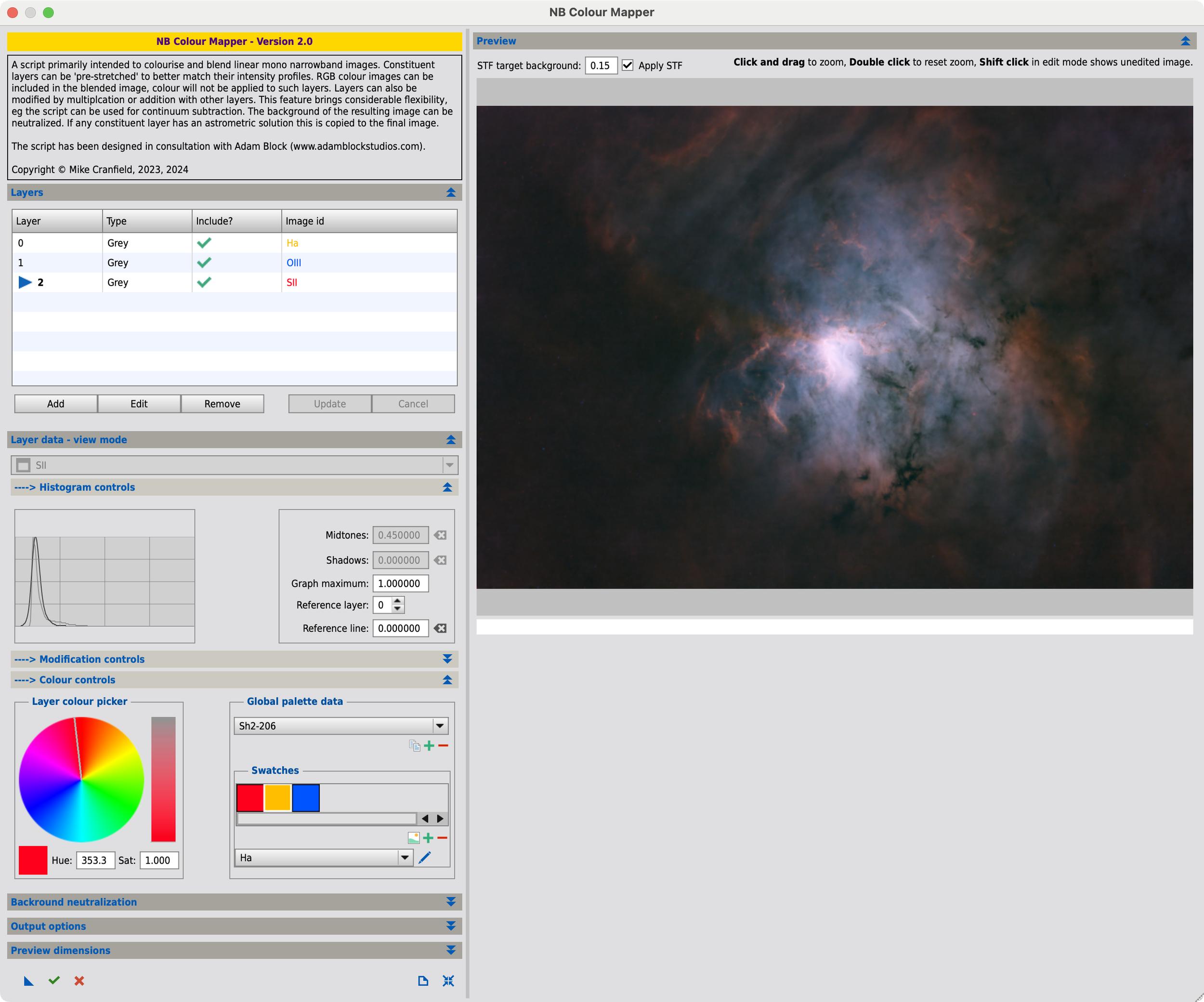Sh2-206
Sh2-206 - Click here for full resolution
Sh2-206, also known as NGC1491, LBN 704 or the Fossil Footprint Nebula, is an emission type bright nebula located about 9,800 light years away from Earth in the constellation of Perseus. The nebula gets its deep red coloration due to many massive stars (such as BD+50 866) embedded within NGC 1491 producing large amounts of ultraviolet radiation and ionizing the hydrogen gas that makes up the nebula.
source: Wikipedia
NGC/IC:
Other Names:
Object:
Constellation:
R.A.:
Dec:
Transit date:
Transit Alt:
NGC1491
LBN 704, Fossil Footprint Nebula
Emission Nebula
Perseus
04h 03m 16s
-51° 18.9′
23 December
76º N
Conditions
Sh2-206 is a typical target for late Autumn and the Winter months. Best time is October through January. Maximum altitude reached is 76° in the north during this period. Sh2-206 was photographed over 9 nights during October, November and December 2024 from the remote observatory at IC Astronomy in Oria, Spain.
Equipment
The default rig at the observatory was used. The core of this rig is a Planewave CDK-14 telescope on a 10Micron GM2000 mount, coupled to a Moravian C3-61000 Pro full-frame camera. The RoboTarget module in Voyager Advanced automated the process to find optimal time-slots during astronomical night.
Telescope
Mount
Camera
Filters
Guiding
Accessoires
Software
Planewave CDK14, Optec Gemini Rotating focuser
10Micron GM2000HPS, custom pier
Moravian C3-61000 Pro, cooled to -10 ºC
Chroma 2” H-alpha, SII, OIII (all 3nm) and Red, Green and Blue unmounted, Moravian filterwheel L, 7-position
Unguided
Compulab Tensor I-22, Windows 11, Dragonfly, Pegasus Ultimate Powerbox v2
Voyager Advanced, Viking, Mountwizzard4, Astroplanner, PixInsight 1.8.9-3
Imaging
Sh2-206 can be imaged in both broadband as well as narrowband. In this case the choice was made for narrowband. Narrowband Images were shot using 10 min exposures. For the stars, quick 3m RGB images were shot. The total exposure was 25.5h.
Resolution (original)
Focal length
Pixel size
Resolution
Field of View (original)
Image center
8521 × 5899 px (50.3 MP)
2585 mm @ f/7.3
3.8 µm
0.30 arcsec/px
42' x 29'
RA: 04h 03m 26.928s
Dec: +51° 17’ 49.59”
Processing
All images were calibrated using Darks (50), Flats (50) and Flat-Darks (50), registered and integrated using the WeightedBatchPreProcessing (WBPP) in PixInsight. All further processing was done in PixInsight, including the use of scripts and tools developed by RC-Astro, SetiAstro, GraXpert, and others. For a step-by-step description of the processing techniques applied, see process flow below.
Creating a Hubble Palette with the NB Colour Mapper
Creating the false colour image according to the Hubble palette (HSO), can be done in different ways. In this example the relatively new script NBColourMapper was used. This script is a collaboration between Adam Block and Mike Cranfield. Adam has published a detailed instruction video on how to use this script, which is part of his Horizon training. Most methods allocate the individual narrowband channels to the individual R, G and B channels and use some kind of normalisation technique to balance individual channel strengths and selectively emphasise certain colours, either with or without colour-specific masks. The NBColourMapper script works in a very different way. Each channel that is added will be allocated its individual colour by means of a hue and saturation number. For a typical SHO image this would mean three channels, but many more channels could be added if needed. Some simple Histogram transformations can be made in the tool and background neutralisation belongs to the options as well.
The NBColourMapper script uses a very different method of creating false-colour palettes such as the Hubble Palette. Each channel is allocated its own defined colour. Changes in Hue, saturation, midpoints etc determine the final colour, which is constantly visible as a preview.
At first, it was challenging to choose the appropriate colors. However, with practice, it became easier to achieve the desired results. I selected the following colors for each channel: Ha 45 (orange), OIII 220 (blue), and SII 353 (red), all at 100% saturation. A color palette can be saved as swatches for future use to ensure a consistent look across images. This was the first image I edited with this script, so we'll see if it works as planned. I created the SHO blend in the linear phase and even before applying the typical tools such as BlurXTerminator, NoiseXTerminator, etc. This was based on the example Adam Block used. But it probably works equally well if you do some further processing on the individual channels before bringing them together.
One further thing to notice about the processing of this image, is that the core of the nebula is very bright. It is hard to stretch well enough to show some of the fainter nebulosity, without the center to clip, or loose most of its color. So I blended two differently stretched images together, one focused on the center, and the other focused on the rest of the image.
Processing workflow (click to enlarge)
This image has been published on Astrobin

